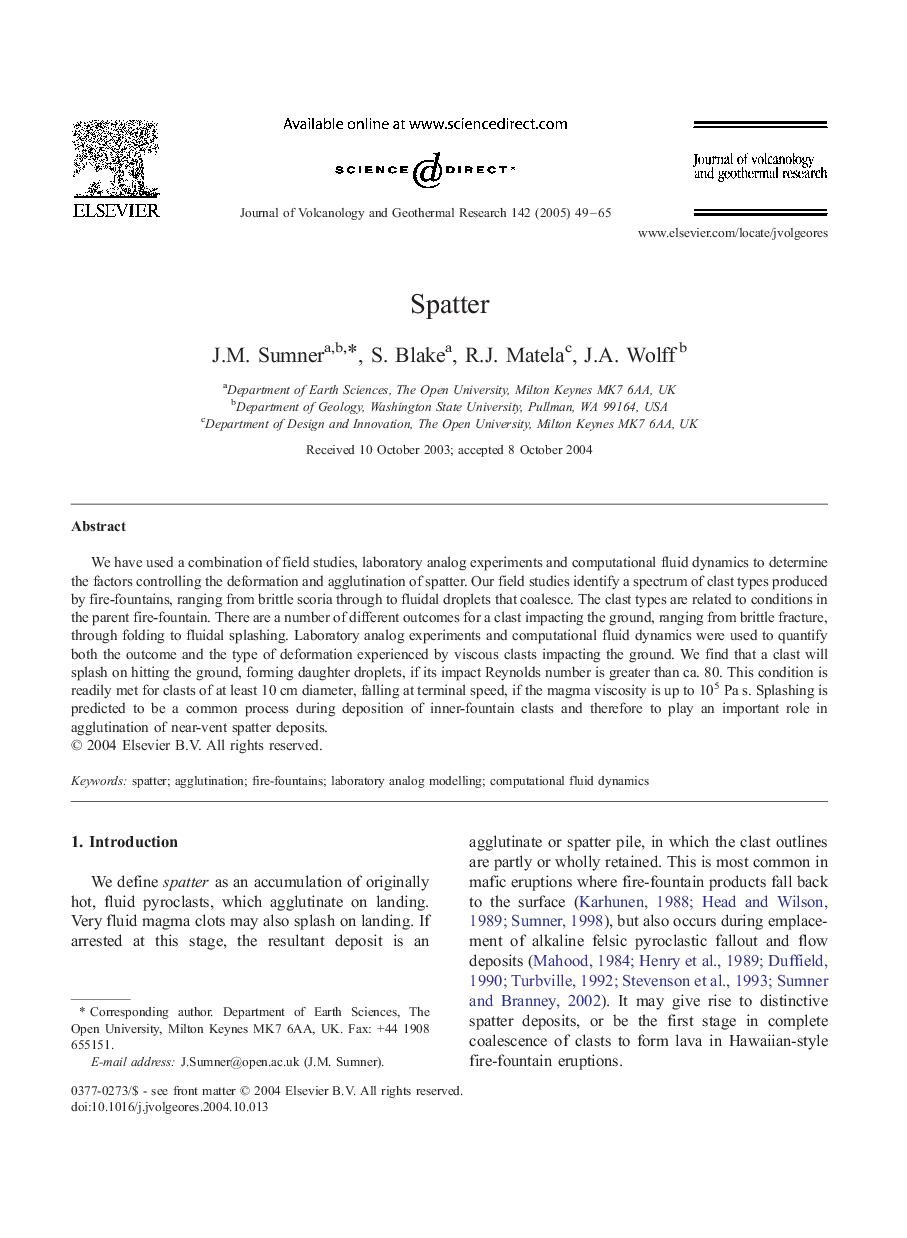| Article ID | Journal | Published Year | Pages | File Type |
|---|---|---|---|---|
| 9531193 | Journal of Volcanology and Geothermal Research | 2005 | 17 Pages |
Abstract
We have used a combination of field studies, laboratory analog experiments and computational fluid dynamics to determine the factors controlling the deformation and agglutination of spatter. Our field studies identify a spectrum of clast types produced by fire-fountains, ranging from brittle scoria through to fluidal droplets that coalesce. The clast types are related to conditions in the parent fire-fountain. There are a number of different outcomes for a clast impacting the ground, ranging from brittle fracture, through folding to fluidal splashing. Laboratory analog experiments and computational fluid dynamics were used to quantify both the outcome and the type of deformation experienced by viscous clasts impacting the ground. We find that a clast will splash on hitting the ground, forming daughter droplets, if its impact Reynolds number is greater than ca. 80. This condition is readily met for clasts of at least 10 cm diameter, falling at terminal speed, if the magma viscosity is up to 105 Pa s. Splashing is predicted to be a common process during deposition of inner-fountain clasts and therefore to play an important role in agglutination of near-vent spatter deposits.
Related Topics
Physical Sciences and Engineering
Earth and Planetary Sciences
Geochemistry and Petrology
Authors
J.M. Sumner, S. Blake, R.J. Matela, J.A. Wolff,
